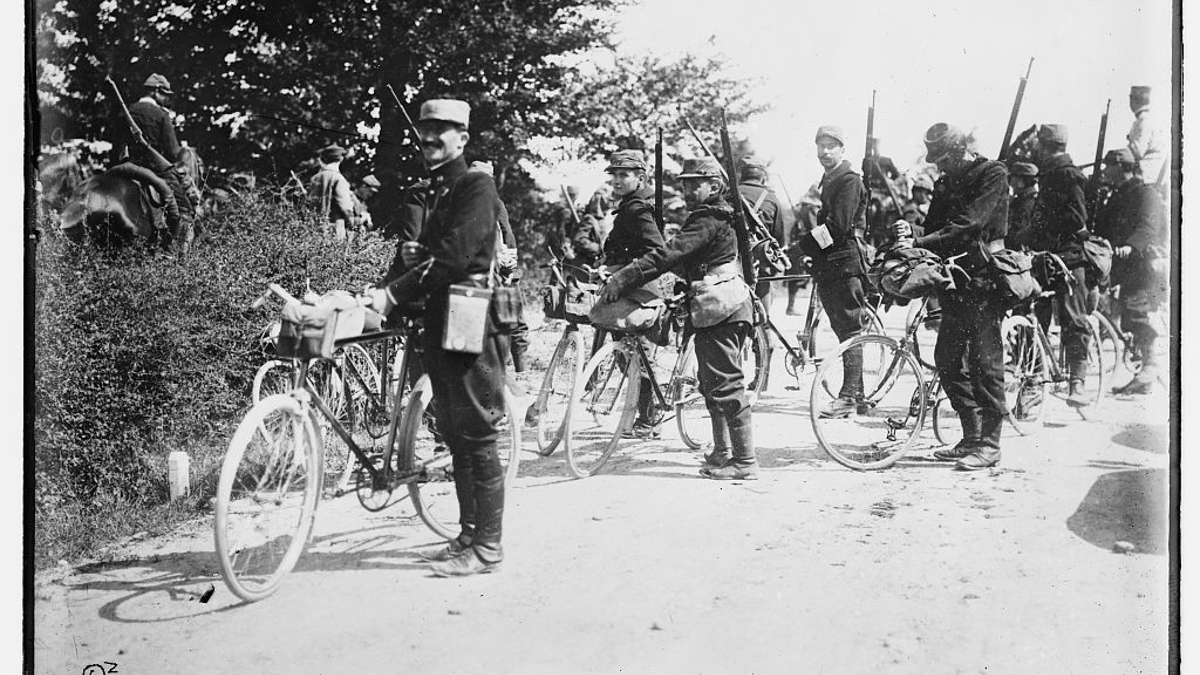
Photograph shows French soldiers with bicycles during the beginning of World War I. Image is part of the George Grantham Bain Collection at the Library of Congress (Library of Congress).
In many parts of the world the bicycle is the main means of transportation as people commute to work. Cycling, for many people, is a way of life, but it also has deep roots in military history throughout the world.
A forerunner of the bicycle was first devised by German Baron Karl Von Drais in 1818, but took many years to be refined into the vehicle that we know today. Frenchmen Pierre Michaux and Pierre Lallement created the pedal driven system that propelled the rider, as well as other innovations.
It didn't take long for the military thinkers of the late 19th century to see the merits of utilizing this new means of transportation. During the Franco-Prussian War (1870-71) bicycles were tested by dispatch riders and scouts with little- if-any success, but that didn't deter others from seeing the benefits that the bicycle had to offer.
The British military used bicycle scouts in field maneuvers in spring exercises in 1885, and, soon after, the armies of Austria and Germany each reconsidered the possibilities of utilizing the two-wheeled contraptions, while the French military formally reintroduced the bicycle into service in 1887.
EVOLUTION OF COMBAT BOOTS: FROM BOOTEES TO MODERN TACTICAL BOOTS
"Various nations' military embraced new technologies," explained John Adams-Graf, editor of “Military Vehicles” magazine.

An American made 1891 Columba Light Roadster Safety, considered state-of-the-art at the time as it featured a rear brake, no seat tube and cushioned tires. This example in the Bicycle Museum of America in New Bremen, Ohio, was modified for use by the U.S. military to hold a rifle and ammunition case. (Photo: Peter Suciu, Bicycle Museum of America)
"With the advent of the pedal bicycle, military minds recognized the efficiency of transporting troops via a mode that required no feed, no special care, or any rest," Adams-Graf told Fox News. "Bicycle-borne troops could move longer distances than troops on foot."
However, the bicycle wasn't exactly embraced by everyone in the era.
"Army brass were all cavalry officers," said Colin Kirsh, author of the book “Bad Teeth No Bar: A History of Military Bicycles in the Great War”
THE LONG GUNS: HISTORY OF US MILITARY RIFLES
"As bicycles had started to replace horses in civilian life they were worried that if they approved the use of bicycles for military purposes that they would replace the cavalry," Kirsh told Fox News. "In the early days, cycle enthusiasts were considered cranks. Soldiers wore the King's uniform and were expected to conduct themselves in a manner that reflected that. Leaning over a bicycle was considered uncouth."
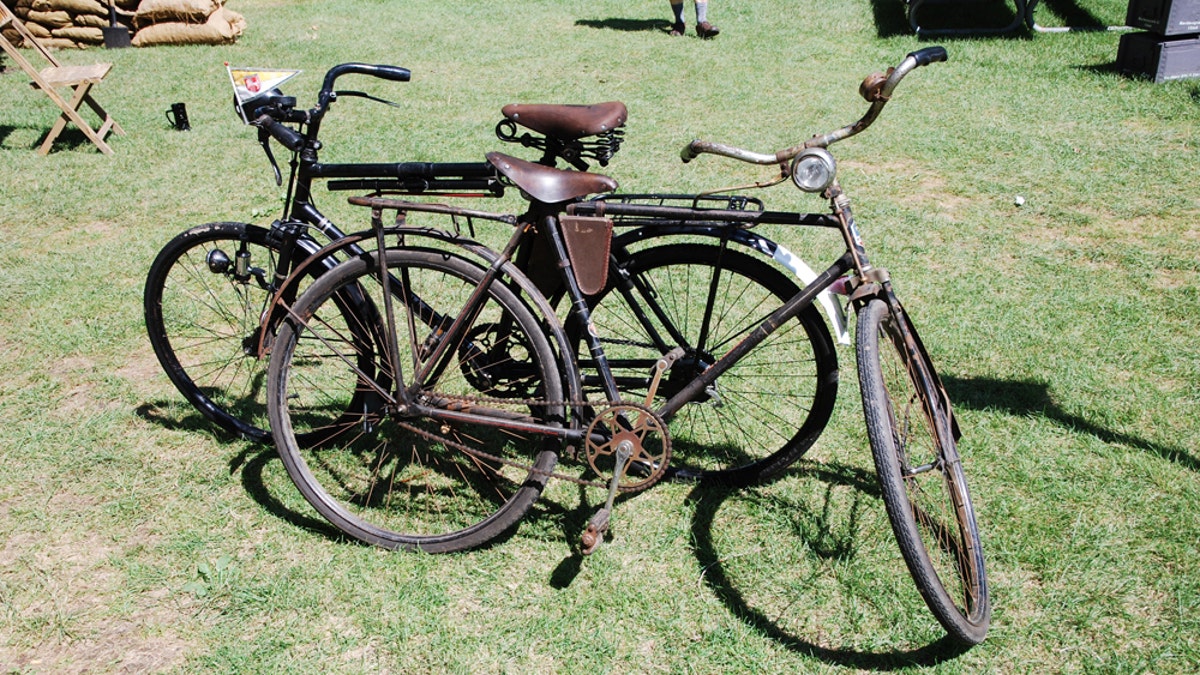
A pair of Swiss Army Bikes. Hundreds of these bikes were sold off as military surplus in the 1990s and when maintained can still be ridden today. The front bike likely dates to the 1930s or possibly earlier and has a simple front brake that literally is lowered on the tire when the brake is engaged. The rear bike is a post-war version, and each has only a single gear! (Photo: Peter Suciu, Private Collection)
As the bicycle's design changed, it allowed the rider to carry himself in a more "military fashion," which helped convince the old guard military thinkers that the two-wheeled contraptions had a place alongside the horse.
By the end of the 19th century Britain had the largest cycling industry in the world noted Kirsch, and this was likely why the bike rolled across South Africa in some numbers during the Second Anglo-Boer War.
"Bicycles were already in use throughout South Africa; the Boers set up a small force of cyclists, and the British followed suit," added Kirsh, who explained it was a matter of timing.
HISTORY OF THE 'JEEP' IN PICTURES
"There were no motorized vehicles yet, and cycles had developed into a practical form," noted Kirsch. "So in the late 1890s the bicycle ruled the road."
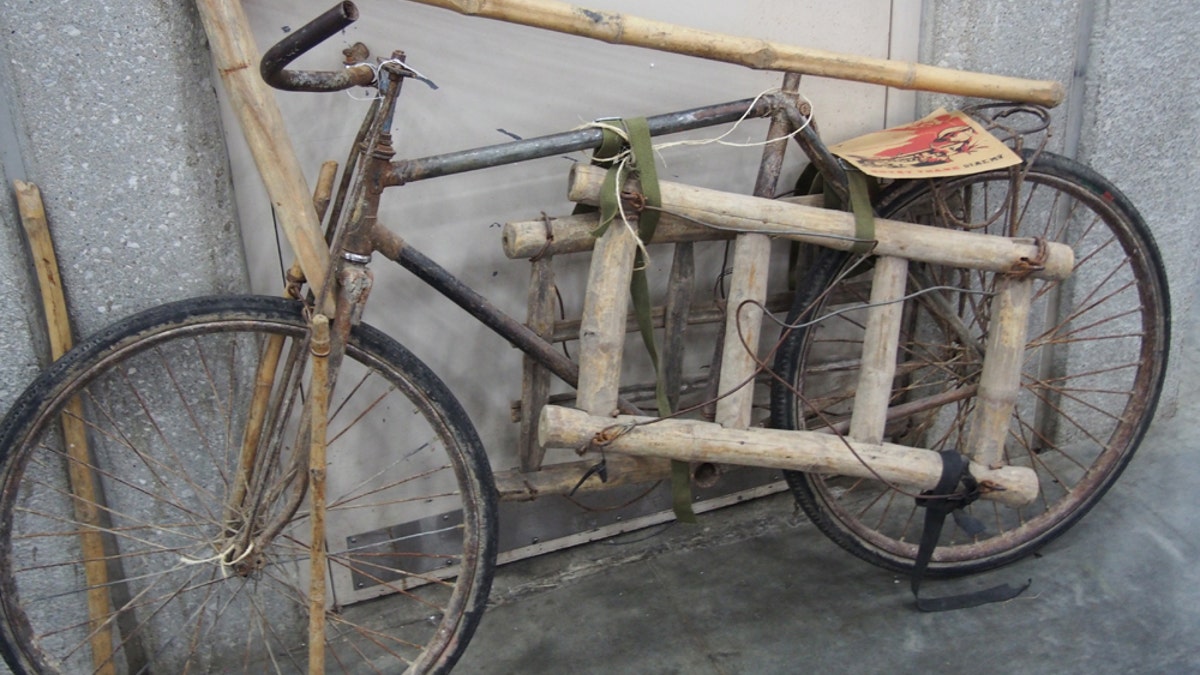
A pre-World War II French bicycle that has been heavily modified to move material on the infamous "Ho Chi Minh Trial" in Southeast Asia during the Vietnam War. This bike couldn't be ridden but instead served a role like a pack mule. It was offered for sale at a collector's show. (Photo: Peter Suciu, Private Collection)
Across the Atlantic the Americans also began to see the potential that bicycles had to offer. The First Signal Corps of the Connecticut National Guard formed the first military bicycle unit in 1891, when the bicycle was used by messengers and relay riders. Various challenges ensued including one that had a Connecticut National Guard cyclist prove he alone could deliver a message faster than an entire flag signaler team, while a relay team carried a single dispatch from Chicago to New York City in just four days and 13 hours, with much of it in rainy weather. A follow-up challenge brought a message from Washington, D.C. to Denver in just over six days!
Across the country from Connecticut at Montana's Fort Missoula 2nd Lieutenant James A. Moss organized the 25th Infantry Bicycle Corps, which consisted of eight soldiers riding in formation and pedaling as much as 40 miles each day. Each bike was fitted with a knapsack, blanket roll and shelter half tent. In addition each rider carried a rifle along with 50 rounds of ammunition.
The Bicycle Corps took part in an 800-mile journey from Fort Missoula to Yellowstone National Park and back, and then journeyed from Fort Missoula to St. Louis, a journey of some 1,900 miles. All this was to prove the possibility of the unit's ability to travel great distances into combat. However, the corps was disbanded just prior to the outbreak of the Spanish-American War.
Bicycles in the World Wars
Across America and Europe it was clear that the bicycle could be used to deliver messages, but military planners adapted it for use with portable topographers and even telegraphers. In one case a rider used his bike to study the grade of hills and other terrain to help commanders in the field determine if the land was traversable with cannons and wagons.
When World War I broke out in 1914 many nations had units that were prepared to ride into combat, but as the war soon became a stalemate of muddy trenches and little movement the bicycle's role diminished. As with the cavalry's horses the bicycle was mainly relegated to use behind the lines.
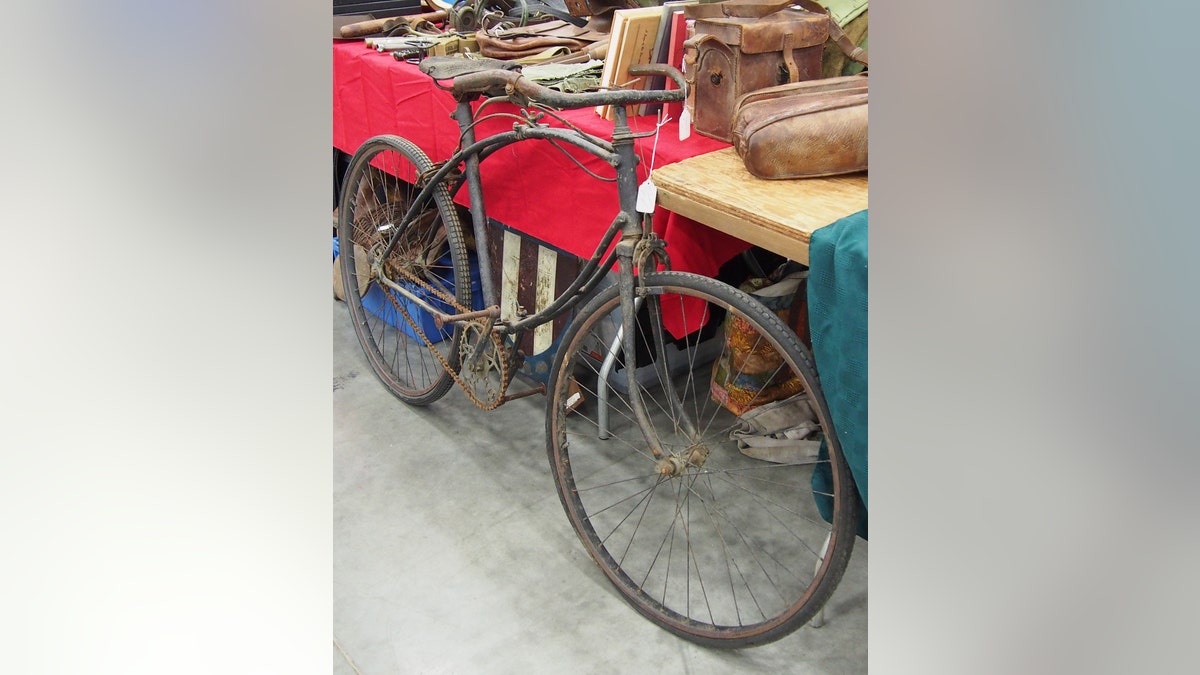
A World War II British-made BSA folding bicycle. This was designed to be folded and could be carried across rivers on the rider's back. Very few of these have survived over the years and most were sold off as scrap or offered to civilians after World War II. (Photo: Peter Suciu, Private Collection)
However, a generation later the bicycle played a more direct role as the Germans, Japanese and British utilized it as a way to move the troops to the front if not directly into combat.
"Bicycles were no longer considered 'combat' vehicles," said Belgian World War II bicycle collector and author Johan Willaert. "However bicycles continued to be used in supporting roles on airfields, depots and camps and were a relatively fast, economic and light way of getting around."
Yet, soldiers did ride bikes into combat; notably the Japanese soldiers who used these to speed troops down the Malay Peninsula in 1941. These soldiers rode the bikes on the rims when the tires went flat as rubber was in short supply. In Europe the bicycle saw use in equally unexpected locales!
HISTORY OF REMOTE WEAPONS IN PICTURES
"One example is that some troops of the Canadian 3rd Division came ashore on Juno Beach, Normandy on June 6th, 1944 equipped with the British made BSA Folding bicycles," Willaert told Fox News. "They were to be ridden by Infantry towards the initial objective of the different units where they would be discarded and the real fighting began."

File photo - A participant dressed as soldier of the former Swiss bicycle regiment rests during the Convoy-to-Remember 2010 meeting in the village of Birmenstorf, west of Zurich August 7, 2010. (REUTERS/Arnd Wiegmann)
The BSA was also utilized by British paratroopers.
"The thinking behind the paratroop folding bicycle was that it would give foot soldiers some distinct advantages," explained Alex Cranmer of New Jersey-based International Military Antiques.
"The War Department felt a paratrooper could cover up to 25 miles on foot in a 24-hour period, however, given a bicycle the same soldier could cover up to 75 miles in a 24 hour period," Cranmer told Fox News. "Furthermore, a bicycle was relatively silent compared to a motorized scooter or vehicle. The issue really come down to the tires, once damaged it rendered the bicycle useless, which is why the BSA folding paratrooper bicycle was far better on paper than on the battlefield."
RISE OF THE MACHINES? THE DANGER OF AUTONOMOUS WEAPONS
After World War II most nations ceased using bicycles, apart from Switzerland, which produced a military bicycle that is almost as ubiquitous as its "Swiss Army Knife." The Swiss Bicycle Infantry was introduced in 1905 and only phased out in 2001, and for nearly 100 years the bikes that the mountain nation used were known for their high quality and equally high durability.
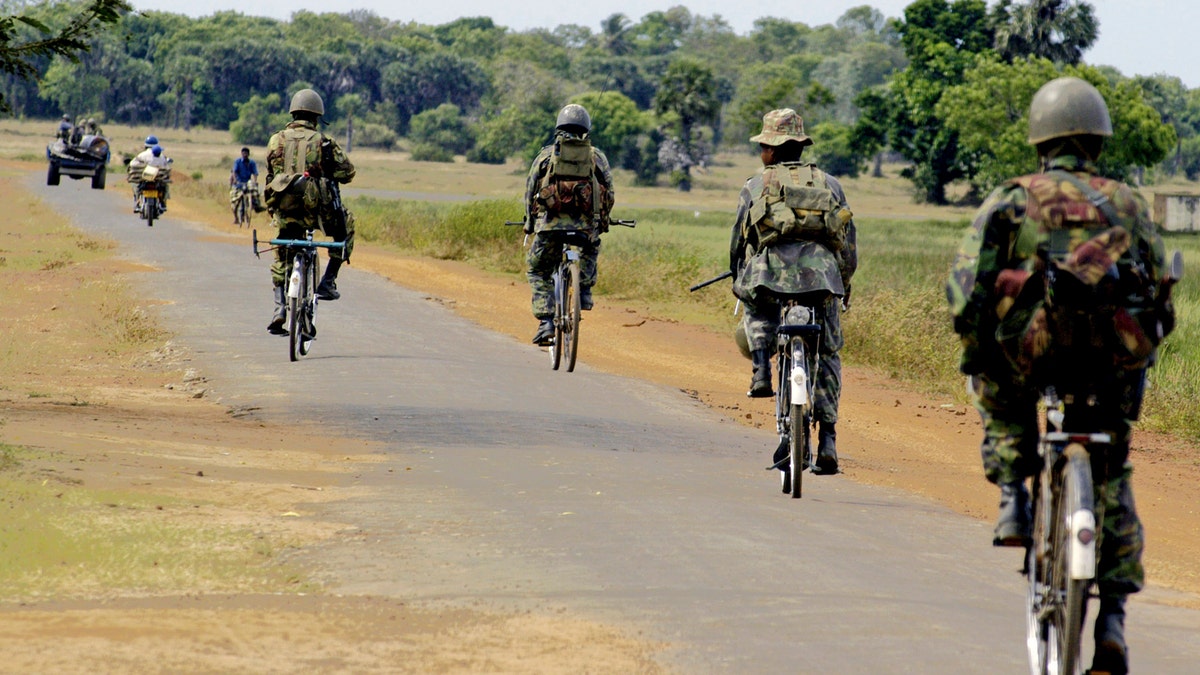
File photo - Special Task Force soldiers on bicycles patrol near Vellavely village in Sri Lanka, which was territory formerly controlled by the Tamil Tiger rebels, in Batticaloa May 28, 2007. (REUTERS/Buddhika Weerasinghe)
And long before the mountain bike craze that began in California and Colorado in the 1970s the bicycle was a true-off road means of transport in the jungles of Vietnam where the Vietcong and North Vietnam forces each utilized bicycles in great numbers.
More recently bicycles have been used by some Special Forces units in Afghanistan, proving that after nearly 150 years since the French experimented with scouts on two wheels that the bike may still have a role with the military.
"There are situations in today's tactical environments for bicycle use – not in large scale troop movements, but rather, in special operations in mountainous terrain where the rider could take advantage of the great leaps in mountain bike design," suggested Adams-Graf. "Of course, if future conflicts left a nation without petroleum or electrical power sources, feet on the pedals will always work to get a soldier from point A to point B! Bicycles are tools that modern warfare planners should remember."
